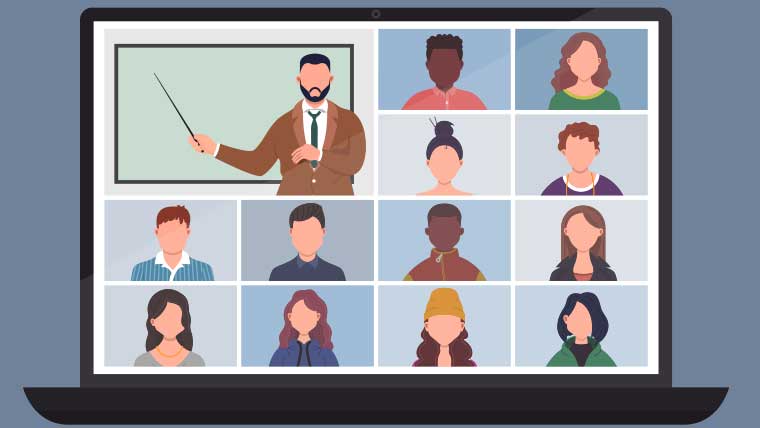A few years ago, I wrote a blog about the need for professionals to be actively involved in professional organizations. At that time, I discussed the benefits of being active in professional organizations including: business networking, expanding one’s personal community of interest, education and professional development, advocacy, charity and fun.
Since that blog, I have remained actively involved at the national level in the American Council of Engineering Companies (ACEC) as chair of the ACEC Federal Agency Procurement Advocacy Committee, and at the local and national level in the Society of American Military Engineers (SAME). As such, I’ve helped navigate the challenges of advancing professional organization goals and objectives during a pandemic that cancelled almost all in-person events.
Both SAME and ACEC have had to shift luncheon presentations, conferences, workshops, trainings, and other events to virtual environments. This shift has not been without challenges, and we’ve learned much during the past eight months.
So how did we adapt and what lessons did we learn for the future?
Initially, the transition from in-person to virtual was problematic. Although in theory it would be relatively easy for a SAME post to give a virtual lunch-time presentation on Zoom or WebEx, in practice it took a couple of months to iron out the details of what platform to use, how to work event registration, and how to address questions and answers during the presentation. Even today, many posts are still figuring out how to charge for attendance at these virtual events as these are typically key fundraisers for scholarships. Additionally, we have not yet figured out how to informally network virtually, other than occasional “virtual happy hours.” These provide limited networking for groups but no ability to transition to one-on-one talks.
We’ve had similar challenges with the national conferences/events. Since both ACEC and SAME had been hosting many virtual meetings and presentations pre-COVID, the transition to fully virtual conference presentations was relatively smooth. In fact, in many ways, virtual technical presentations with the ability to download slides and engage in live chat questions and answers actually provided a better experience than many previous live events. Similarly, national committee meetings made the transition to virtual without too much loss in value.
However, the networking aspect of conferences has had major growing pains. The first virtual conference I attended was the SAME JETC in May 2020, and although the general and technical sessions were good, the virtual exhibit hall was not user friendly and did not provide any real opportunities for networking. SAME learned a great deal from that experience, and the Small Business Conference in November 2020 had a much-improved virtual exhibit hall with virtual exhibitor booths with instant messaging and video chat options. This significantly improved the networking value of the conference, although making it work as either an exhibitor or attendee takes much more planning effort than attendance at an in-person event.
How can we adapt to our new virtual environment?
When it comes to local events and luncheons, we’ve learned several ways to create a smoother transition to virtual. These include:
- Determine how to fundraise with your event. Some posts allow sponsors to donate and then provide a 5-minute spotlight presentation. Others use Eventbrite and charge for attendance.
- Pick interesting topics. Since almost all events nationwide are now virtual, there’s a lot of competition. Pick topics that will draw attendance.
- Provide plenty of time for planning. Virtual events require twice the planning effort of in-person events.
- Less is more. “Virtual burn-out” is real. It’s better to have six quality 45-minute meetings annually than 12 hour-long sessions.
- Provide value. Individuals and companies are savvy consumers and demand a good return for their time and money. They may try your event once but may not return.
For national events, the strategies we’ve learned include:
- Pick a good electronic platform and have a team dedicated to managing it during the conference.
- Beta test electronic platforms with actual attendees.
- Provide training to “virtual booth” attendees.
- Focus on excellent technical presentations. These provide the most value.
- For General sessions, you should have a real draw, such as a nationally-known news anchor, astronaut, medal of honor recipient, etc.
- Provide adequate time for planning. Virtual events require twice the planning effort of in-person events.
- Provide value. Individuals and companies are savvy consumers and demand a good return for their time and money.
- Limit conferences to no more than two days, and no more than four hours a day. Three days may be doable if it’s only mornings or afternoons.
Key takeaways
2020 has been a real challenge for professional organizations. Most of them depended on in-person events to fund their operations and philanthropic activities. The shift to all-virtual meetings and events demanded a dramatic shift in not only how events were executed, but also in their agenda, frequency, organization, content and funding. Through sharing lessons-learned and best practices, organizations have adapted. Networking, which is a key value of belonging to a professional organization, is still challenging. Improved virtual reality is making even this aspect better, but it may never equal the value of in-person meetings.
As we anxiously await a COVID vaccine and look forward to a return to in-person events, what can we keep from our virtual lessons-learned to provide even greater value to our professional organization members?



